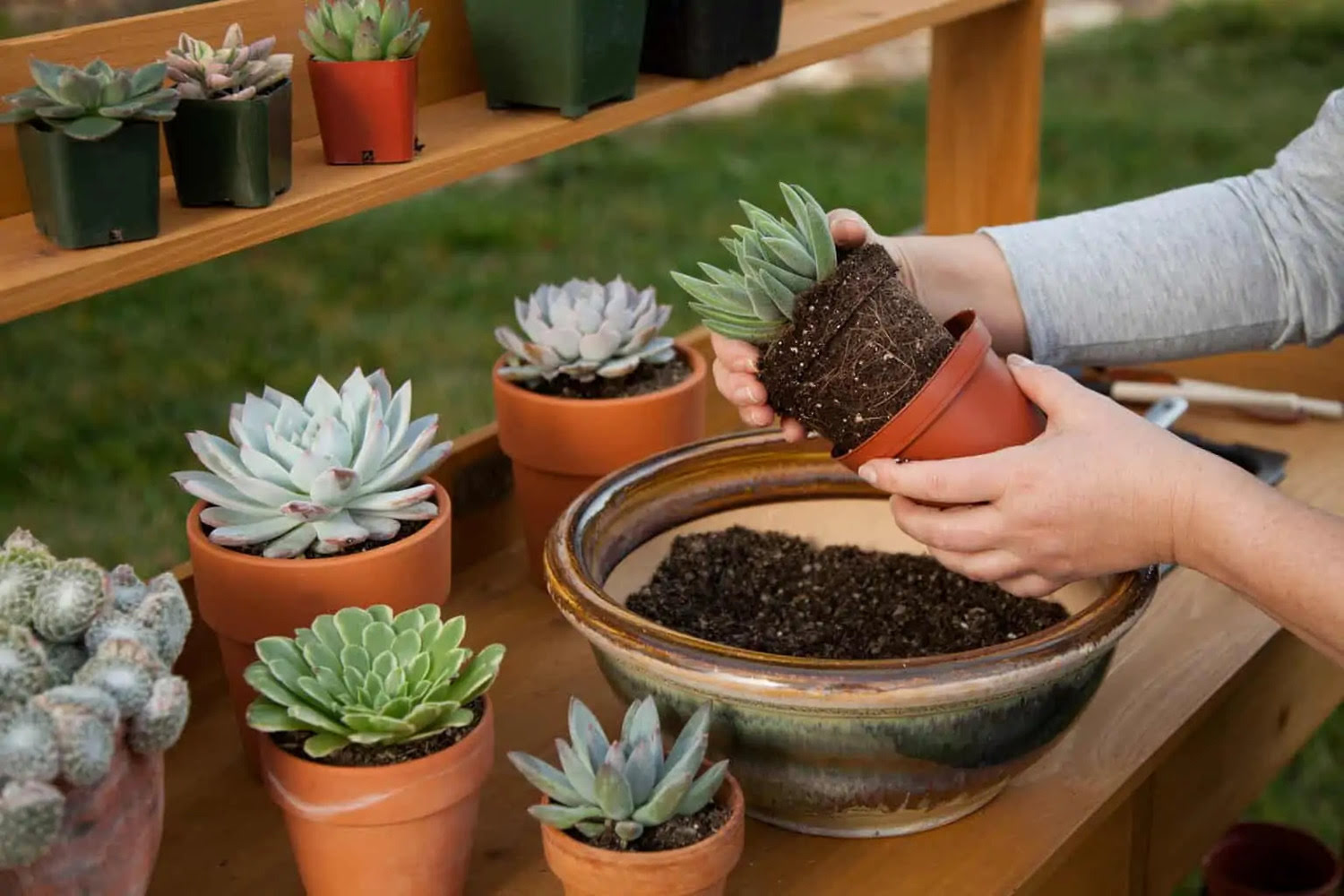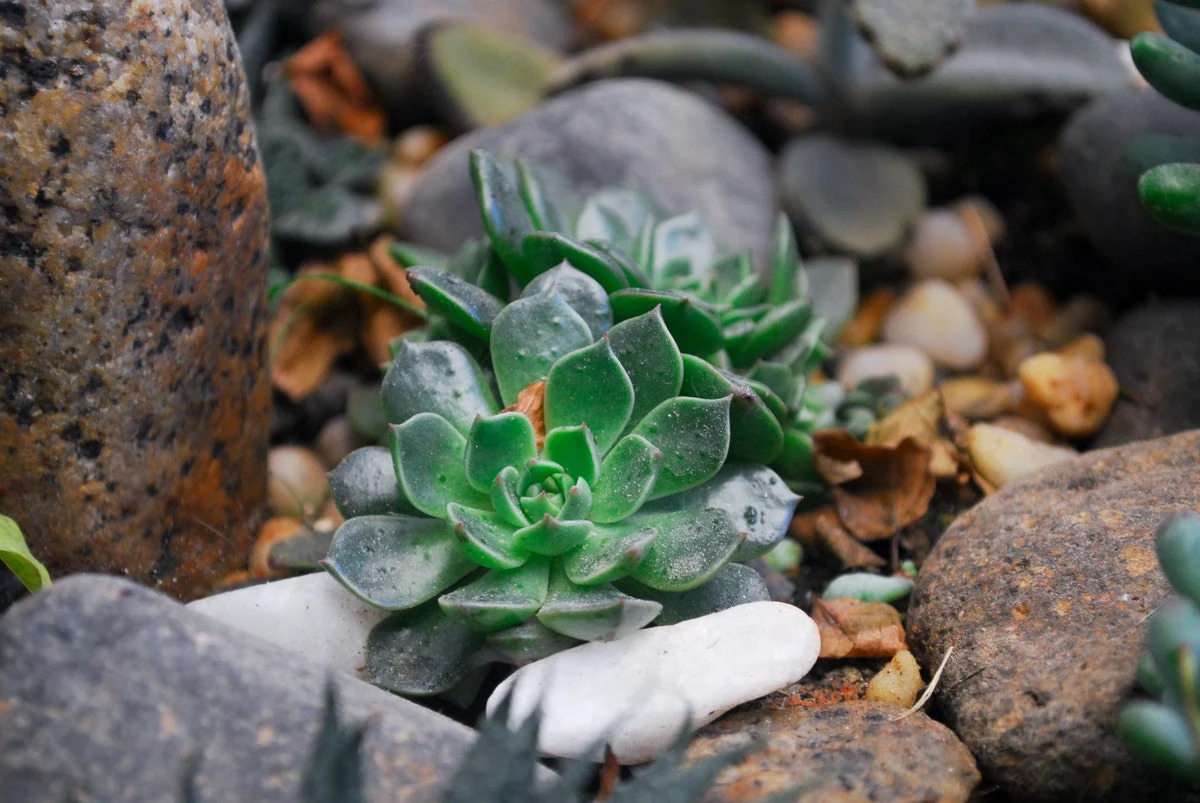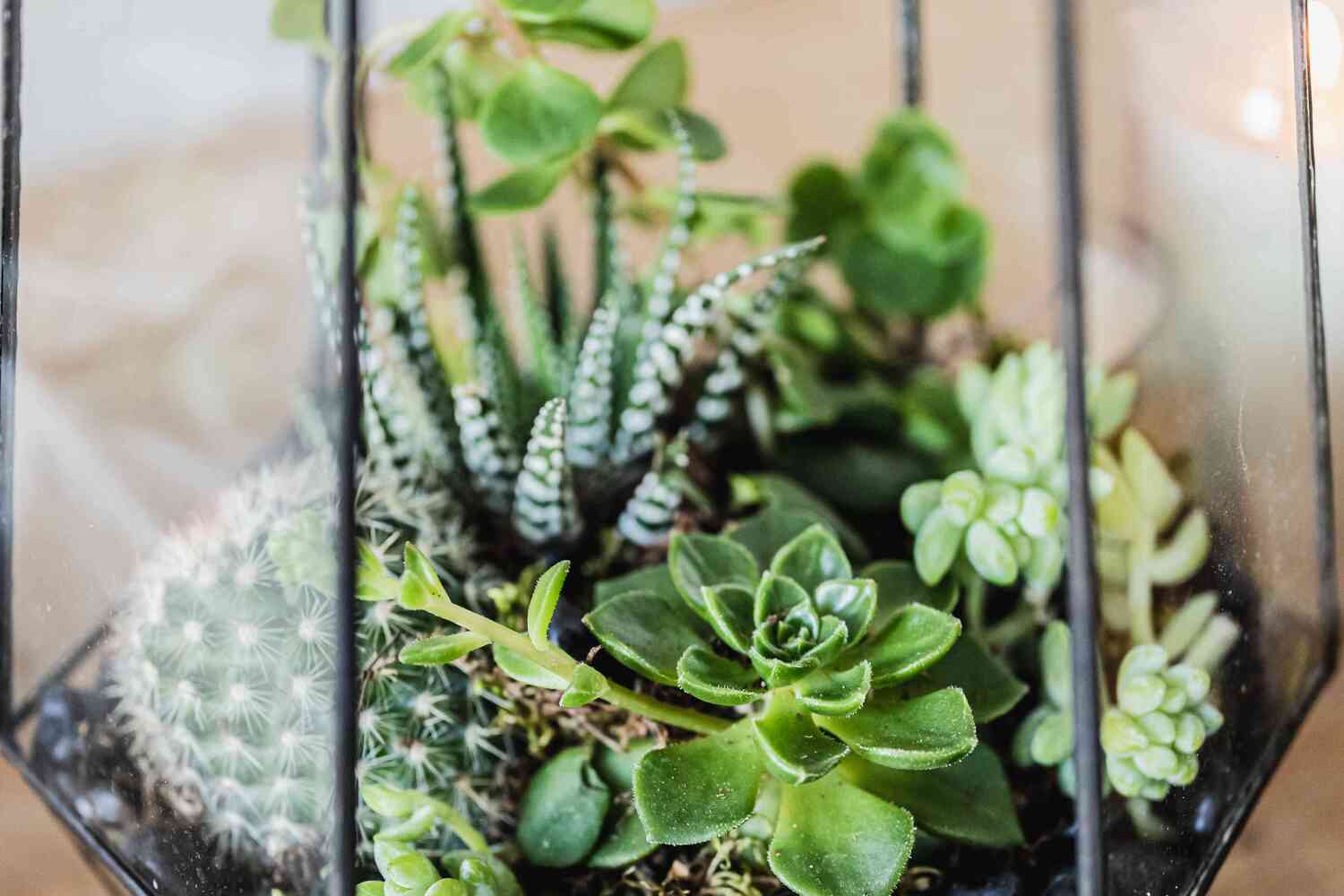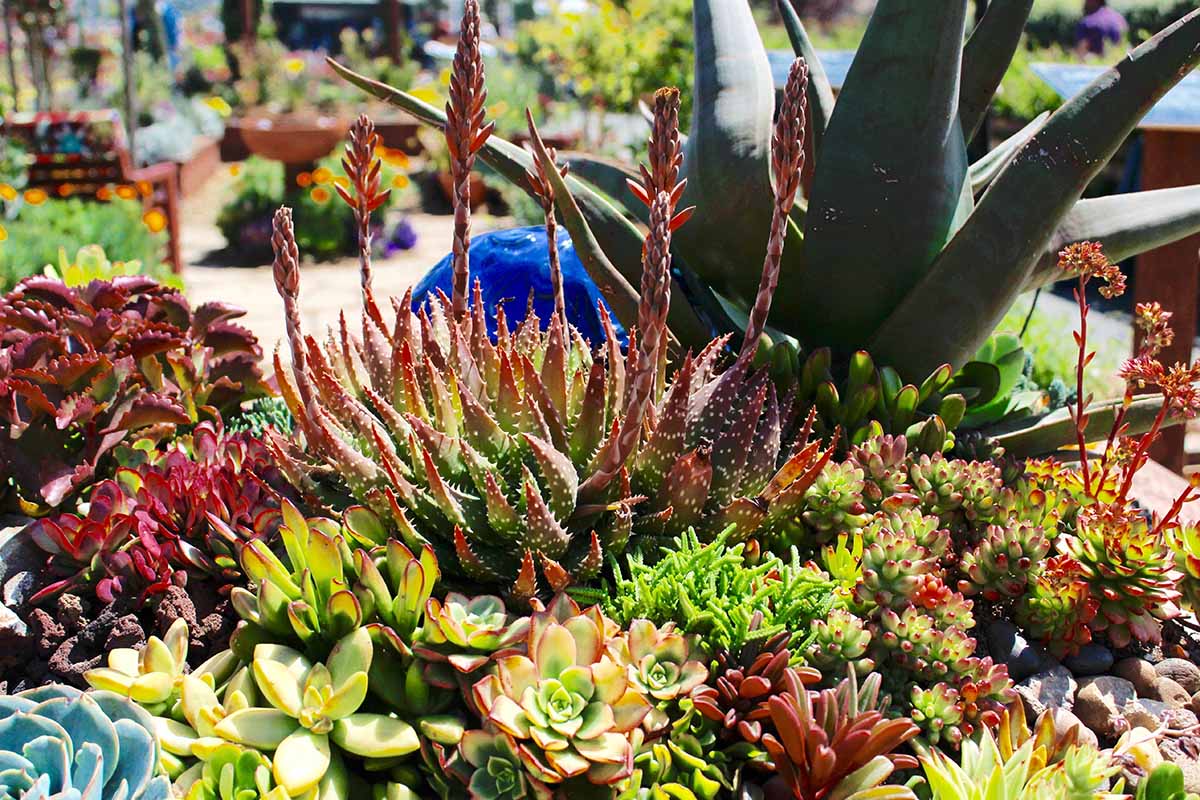Home>Gardening News and Trends>Gardening Trends>How To Plant Succulents After Propagation


Gardening Trends
How To Plant Succulents After Propagation
Published: February 2, 2024
Learn the latest gardening trends with our guide on how to plant succulents after propagation. Discover the best techniques for successful succulent growth.
(Many of the links in this article redirect to a specific reviewed product. Your purchase of these products through affiliate links helps to generate commission for Chicagolandgardening.com, at no extra cost. Learn more)
Table of Contents
Introduction
Succulents have gained immense popularity in the gardening world for their striking appearance and low-maintenance nature. One of the most rewarding aspects of cultivating these plants is propagation, which allows enthusiasts to grow new succulents from existing ones. Whether you're a seasoned gardener or a novice plant parent, learning how to plant succulents after propagation can be a fulfilling and educational experience.
In this comprehensive guide, we will delve into the intricacies of succulent propagation and provide step-by-step instructions for successfully planting propagated succulents. From understanding the propagation process to selecting the ideal soil and containers, we'll cover every essential aspect to ensure that your newly planted succulents thrive in their new environment.
By the end of this guide, you will be equipped with the knowledge and confidence to propagate and plant succulents with ease, fostering a deeper appreciation for these captivating plants. So, roll up your sleeves and get ready to embark on a rewarding journey into the world of succulent propagation and planting.
Understanding Succulent Propagation
Succulent propagation refers to the process of growing new plants from various parts of an existing succulent, such as leaves, stems, or offsets. This fascinating technique allows gardeners to expand their succulent collection and share these resilient plants with friends and family.
There are several methods of succulent propagation, with leaf and stem propagation being the most common. Leaf propagation involves carefully removing healthy leaves from a mature succulent and allowing them to develop into new plants. Stem propagation, on the other hand, entails planting cuttings from the parent plant to cultivate new succulents.
Another popular method is propagating succulents from offsets, which are small, identical plants that sprout from the base of the parent succulent. These offsets can be gently separated and planted individually, giving rise to new, independent plants.
Understanding the unique characteristics of succulents is crucial for successful propagation. These plants have evolved to store water in their fleshy leaves and stems, enabling them to survive in arid environments. When propagating succulents, it’s essential to consider their water-storing adaptations and provide the appropriate care to encourage healthy growth.
Furthermore, each succulent species may have specific propagation requirements, so it’s beneficial to research the particular needs of the plants you intend to propagate. By gaining a deeper understanding of succulent propagation methods and the biological mechanisms behind them, you can embark on this rewarding journey with confidence and precision.
Choosing the Right Soil
When planting propagated succulents, selecting the appropriate soil is paramount to their long-term health and vitality. Succulents thrive in well-draining soil that mimics their natural habitat, which is often characterized by sandy or rocky terrain with minimal organic matter. The ideal soil for succulents should promote proper air circulation around the roots and prevent waterlogging, as excessive moisture can lead to root rot and other complications.
A common mistake when planting succulents is using standard potting soil, which retains too much moisture and can hinder the plant’s ability to thrive. Instead, opt for a specialized succulent or cactus mix, readily available at nurseries and garden centers. These mixes are formulated to provide the porous, fast-draining environment that succulents require.
Alternatively, you can create a custom succulent soil mix by combining equal parts of standard potting soil and coarse sand or perlite. This DIY approach allows you to tailor the soil composition to suit the specific needs of your propagated succulents.
It’s important to note that the container in which the succulents will be planted also influences the choice of soil. For instance, if you’re using a container with drainage holes, a well-draining soil mix is essential to prevent water from accumulating at the bottom. On the other hand, if you opt for a container without drainage holes, it’s crucial to exercise restraint when watering to avoid waterlogged soil.
By carefully selecting the right soil for your propagated succulents, you provide them with a solid foundation for growth and resilience. The proper soil composition sets the stage for thriving, healthy plants that will bring joy and beauty to your indoor or outdoor space.
Selecting the Proper Container
Choosing the right container for planting propagated succulents is a crucial decision that directly impacts their well-being. The container not only serves as a decorative element but also plays a vital role in providing an optimal environment for the succulents to flourish.
One of the primary considerations when selecting a container is ensuring that it has adequate drainage. Succulents are highly susceptible to root rot caused by standing water, so it’s essential to choose a container with drainage holes at the bottom. These drainage holes allow excess water to escape, preventing the soil from becoming waterlogged and endangering the succulents’ health.
Furthermore, the size of the container is a key factor to ponder. While it’s tempting to place succulents in large containers, a pot that is too spacious can lead to overwatering, as the excess soil retains moisture for extended periods. Conversely, a container that is too small may restrict the succulents’ root development and hinder their growth. Aim for a container that provides ample space for the succulents’ roots to spread comfortably, with a little room for future growth.
Additionally, consider the aesthetic appeal and overall design of the container. Succulents are prized for their visual allure, and the right container can accentuate their natural beauty. Whether you prefer terracotta pots, ceramic planters, or modern geometric containers, choose a vessel that complements the succulents’ unique characteristics and enhances the ambiance of their surroundings.
For those who enjoy creative projects, repurposing unconventional items as succulent containers can add a whimsical touch to the planting process. Teacups, mason jars, and driftwood can all be transformed into charming homes for propagated succulents, infusing personality and charm into your gardening endeavors.
Ultimately, the proper container for planting propagated succulents strikes a harmonious balance between functionality and aesthetics, providing a nurturing habitat for these resilient plants to thrive and beautify their environment.
Preparing the Soil
Before planting propagated succulents, it’s essential to prepare the soil to create an optimal growing environment for these resilient plants. Properly preparing the soil sets the stage for healthy root development and overall plant vigor, ensuring that your succulents thrive in their new home.
The first step in soil preparation is to ensure that the chosen potting mix is well-draining and provides adequate aeration for the succulents’ roots. If using a commercial succulent or cactus mix, it’s beneficial to examine the texture and consistency of the soil to ensure it meets the requirements for proper drainage. Should you opt for a DIY soil mix, thoroughly blend the components to achieve a homogeneous mixture that promotes optimal moisture retention and drainage.
Prior to filling the container with soil, it’s advisable to place a layer of small rocks or pebbles at the bottom to facilitate drainage. This layer acts as a buffer, preventing excess water from accumulating around the roots and safeguarding the succulents from potential water-related issues. Additionally, the rocks or pebbles contribute to the overall stability and structure of the soil within the container.
Once the drainage layer is in place, carefully fill the container with the prepared soil mix, ensuring an even distribution and gentle compaction to provide a stable foundation for the succulents. Avoid over-packing the soil, as this can impede air circulation and root growth. The goal is to create a supportive yet porous environment that promotes healthy root development and overall plant vitality.
Prior to planting the propagated succulents, it’s beneficial to moisten the soil slightly to facilitate the initial establishment of the plants. However, it’s crucial to exercise restraint and avoid saturating the soil, as succulents are adapted to arid conditions and are susceptible to root rot in overly moist environments.
By meticulously preparing the soil for planting, you establish the groundwork for a thriving succulent garden, ensuring that the propagated plants receive the essential support and nourishment they need to flourish in their new environment.
Planting the Propagated Succulents
As you embark on the exciting journey of planting propagated succulents, it’s essential to approach the process with care and attention to detail. By following the proper planting techniques, you can ensure that your succulents establish strong roots and thrive in their new home.
When planting succulents, it’s crucial to handle the propagated cuttings or offsets with delicacy and precision. If you’re working with leaf cuttings, allow them to callus over for a day or two before planting. This callusing process helps prevent moisture loss and reduces the risk of rot when the leaf is placed in the soil.
For stem cuttings, ensure that the severed ends have healed and dried before planting. This step minimizes the likelihood of pathogens entering the open wounds and promotes successful root development. When planting offsets, gently detach them from the parent plant, taking care not to damage the delicate roots or leaves.
Once the cuttings or offsets are ready, create small indentations in the prepared soil using your finger or a small tool. Carefully place the succulent cuttings or offsets into the indentations, ensuring that they are planted at the appropriate depth and are stable within the soil. Avoid burying the entire cutting or offset, as this can lead to excessive moisture retention around the plant, potentially causing rot.
After planting, refrain from watering the succulents immediately. It’s best to allow the cuttings or offsets to acclimate to their new environment for a few days before introducing moisture. This brief period of dryness encourages the development of roots and minimizes the risk of overwatering, which is a common concern during the initial stages of planting.
Once the succulents have settled into the soil, introduce light watering to provide the moisture necessary for root establishment. However, exercise caution and avoid drenching the soil, as succulents are adapted to infrequent watering and are susceptible to root rot in waterlogged conditions.
By employing proper planting techniques and exercising patience, you can set the stage for the propagated succulents to take root and thrive in their new environment, bringing beauty and vitality to your indoor or outdoor space.
Caring for Newly Planted Succulents
After planting propagated succulents, providing attentive care is essential to support their growth and ensure their long-term well-being. Proper care practices, including watering, sunlight exposure, and maintenance, play a pivotal role in nurturing these resilient plants as they acclimate to their new surroundings.
One of the fundamental aspects of succulent care is establishing a balanced watering routine. Newly planted succulents benefit from a gradual acclimatization to watering, as their roots are still developing. It’s advisable to water the succulents sparingly in the initial weeks, allowing the soil to dry out between watering sessions. This approach encourages the roots to seek moisture and promotes robust, drought-resistant growth.
Moreover, sunlight exposure is a critical factor in succulent care. Newly planted succulents should be gradually introduced to sunlight to prevent sunburn and stress. Begin by placing them in a location with indirect sunlight for a few hours each day, gradually increasing their exposure as they acclimate. Observing the succulents’ response to sunlight and adjusting their placement accordingly helps prevent sun damage and promotes healthy growth.
During the first few months after planting, it’s important to monitor the succulents for signs of stress or disease. Keep an eye out for wilting, discoloration, or pest infestations, and address any issues promptly. Inspecting the plants regularly allows you to identify and mitigate potential problems, safeguarding the succulents’ health and vitality.
As the newly planted succulents establish themselves, resist the urge to fertilize them immediately. Succulents have modest nutritional needs, and applying fertilizer too soon can overwhelm their delicate root systems. Wait until the succulents have been in their new environment for a few months before considering a light application of a balanced, diluted fertilizer specifically formulated for succulents.
Finally, maintaining a well-ventilated and clutter-free environment around the succulents promotes their overall health. Good air circulation minimizes the risk of fungal diseases and encourages sturdy growth. Clearing away debris and ensuring that the succulents have ample space around them allows for unobstructed growth and reduces the likelihood of pest infestations.
By providing attentive care and gradually acclimating the newly planted succulents to their environment, you set the stage for their successful establishment and long-term flourishing. With patience and nurturing, these resilient plants will grace your space with their captivating beauty and enduring charm.
Conclusion
Embarking on the journey of planting propagated succulents is a rewarding endeavor that offers a deeper understanding of these captivating plants and the gratifying experience of nurturing new growth. By mastering the art of succulent propagation and planting, you gain the ability to expand your succulent collection and share the beauty of these resilient plants with others.
Understanding the intricacies of succulent propagation, from leaf and stem cuttings to offsets, provides a comprehensive foundation for successfully cultivating new succulents from existing ones. This knowledge empowers you to engage in the propagation process with confidence and precision, ensuring the best possible outcomes for the propagated plants.
Choosing the right soil and container is pivotal in creating a conducive environment for the newly planted succulents to thrive. By providing well-draining soil and selecting containers with adequate drainage and appropriate size, you lay the groundwork for healthy root development and overall plant vitality.
Furthermore, the meticulous preparation of the soil and the careful planting of the propagated succulents are crucial steps in fostering their successful establishment. By approaching the planting process with care and attention to detail, you set the stage for the succulents to take root and flourish in their new environment.
Once the succulents are planted, providing attentive care, including balanced watering, gradual sunlight exposure, and vigilant maintenance, is essential for their well-being. By nurturing the newly planted succulents and acclimating them to their surroundings, you contribute to their long-term growth and resilience.
In conclusion, the journey of planting propagated succulents is a blend of artistry, horticultural knowledge, and nurturing care. As you witness the growth and development of the newly planted succulents, you’ll find immense satisfaction in fostering their resilience and beauty, creating a thriving succulent garden that brings joy and tranquility to your indoor or outdoor space.








